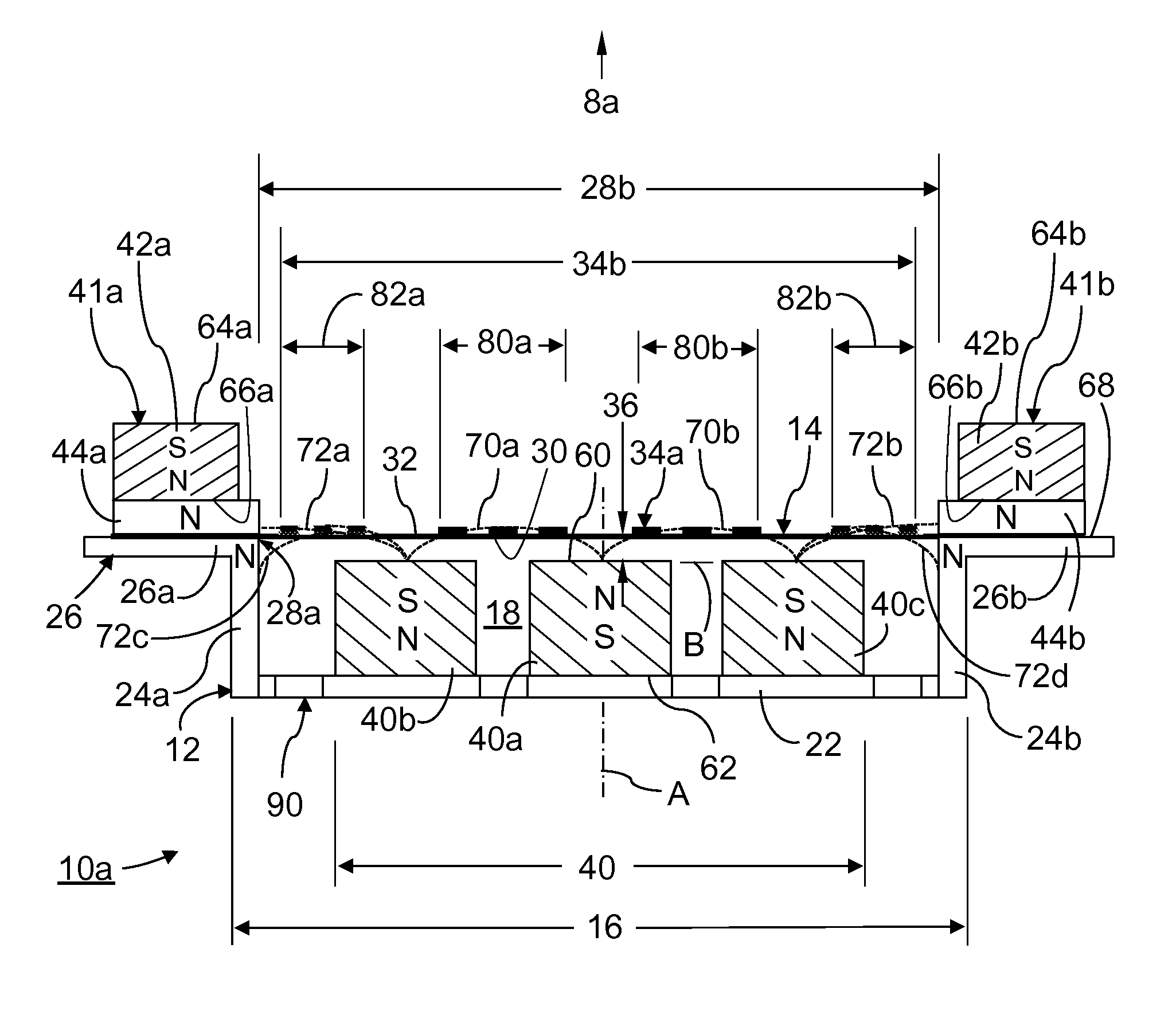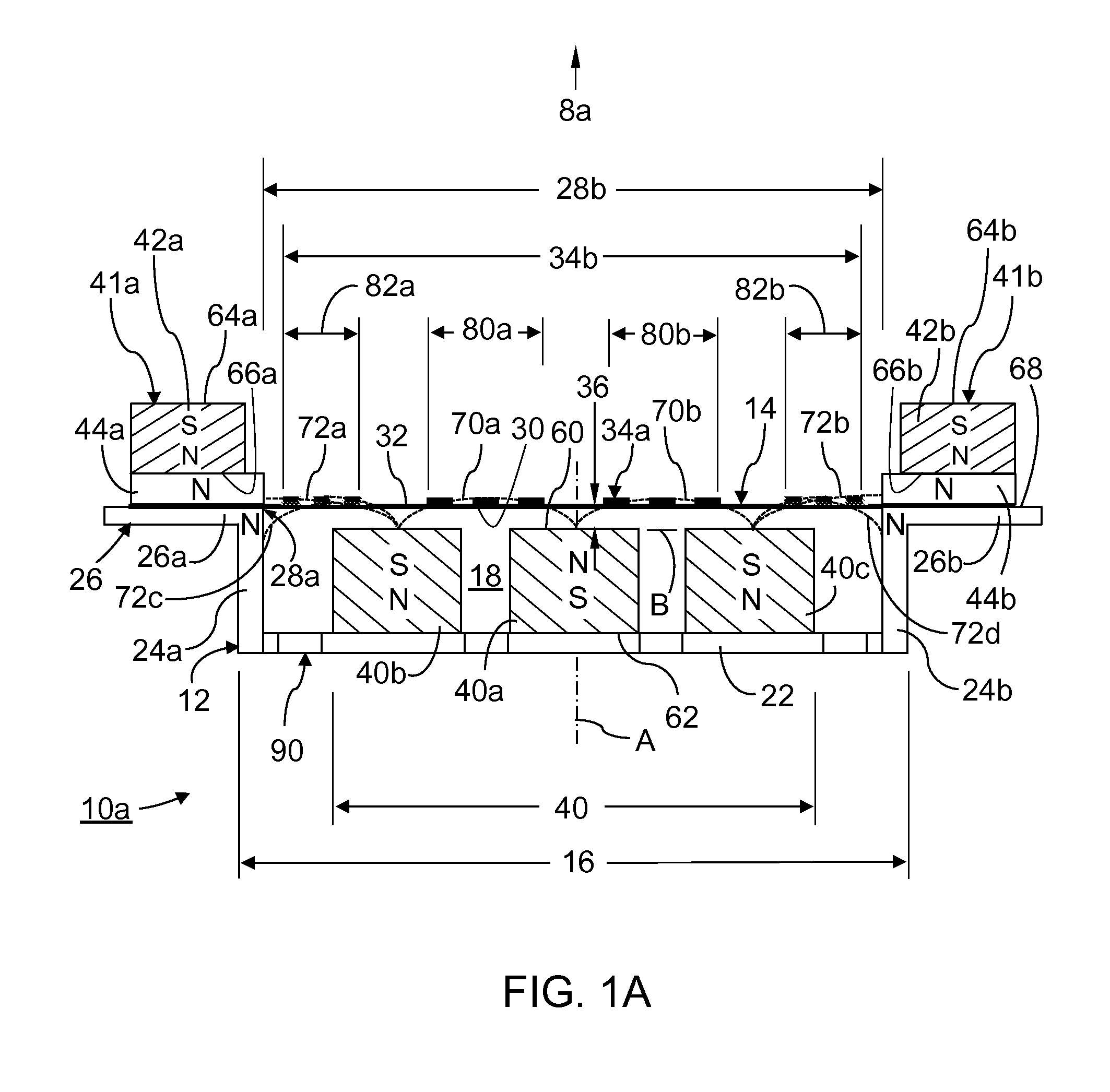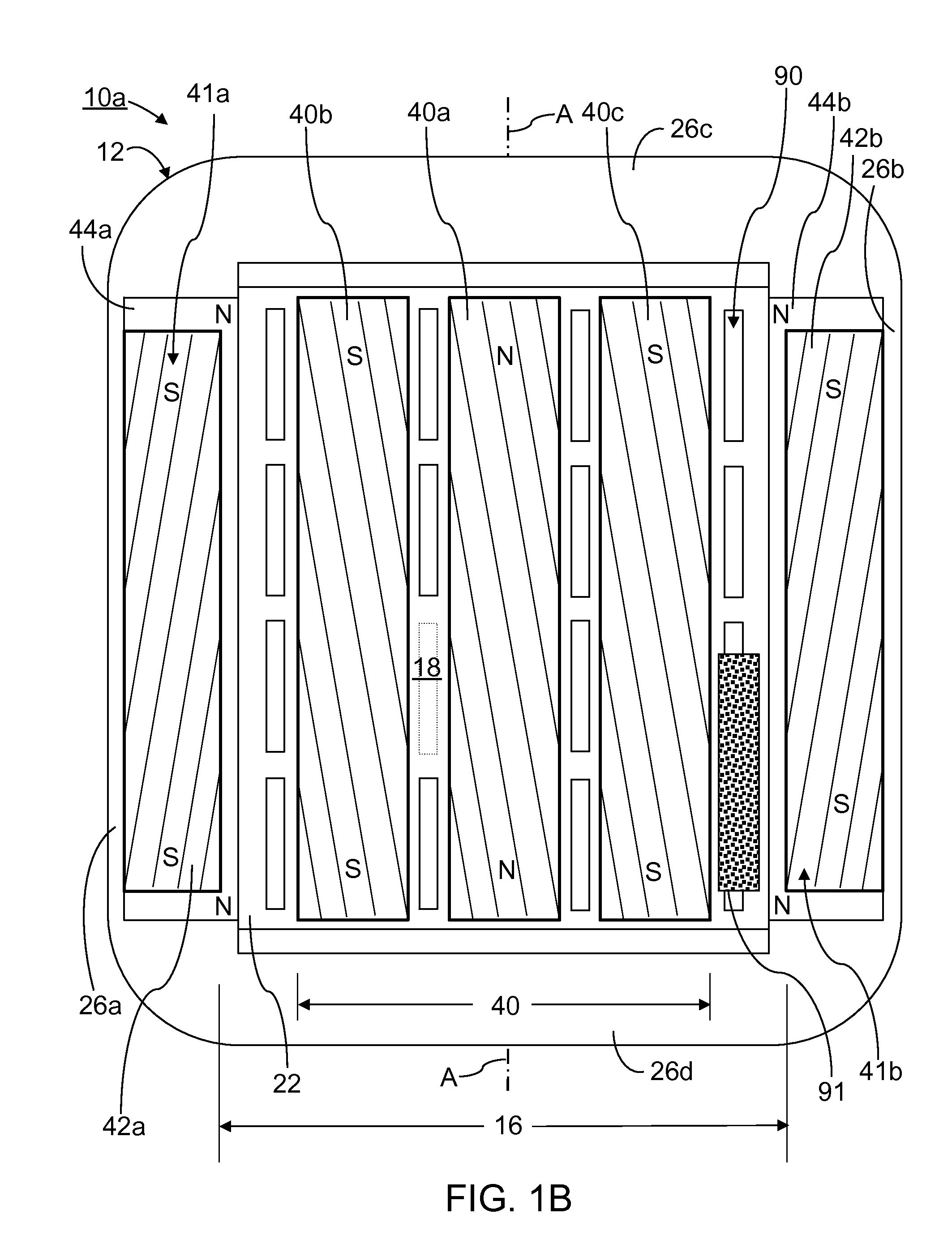Planar-Magnetic Transducer With Improved Electro-Magnetic Circuit
a technology of electromagnetic circuit and transducer, applied in the direction of transducer details, electrical transducers, plane diaphragms, etc., can solve the problems of reducing the accuracy of high frequency amplitude response, affecting the operation of the diaphragm, so as to improve the excursion capability of the complete diaphragm, improve the control of the diaphragm, and increase the efficiency and available drive force of the diaphra
- Summary
- Abstract
- Description
- Claims
- Application Information
AI Technical Summary
Benefits of technology
Problems solved by technology
Method used
Image
Examples
Embodiment Construction
[0046]Referring initially to FIGS. 1A and 1B of the drawings, depicted therein is a first example of a quasi-double-sided drive, planar magnetic transducer 10a of the present invention. The first example transducer 10a comprises a frame 12, a diaphragm 14, and a primary magnetic structure 16. As depicted in FIG. 1A, a center-plane ‘A’ is defined with reference to the first example transducer 10a. A dimension of the example transducer 10a perpendicular to the center plane ‘A’ and substantially parallel to the diaphragm 14 will be referred to as a first, lateral, or width, X-axis reference direction. A direction along the center plane ‘A’ substantially perpendicular to the diaphragm will be referred to as a second, depth, or height, Y-axis reference dimension of the example transducer 10a. A dimension of the example transducer 10a parallel to the center plane ‘A’ and substantially parallel to the diaphragm 14 will be referred to as a third, longitudinal, or length, Z-axis reference di...
PUM
 Login to View More
Login to View More Abstract
Description
Claims
Application Information
 Login to View More
Login to View More - R&D
- Intellectual Property
- Life Sciences
- Materials
- Tech Scout
- Unparalleled Data Quality
- Higher Quality Content
- 60% Fewer Hallucinations
Browse by: Latest US Patents, China's latest patents, Technical Efficacy Thesaurus, Application Domain, Technology Topic, Popular Technical Reports.
© 2025 PatSnap. All rights reserved.Legal|Privacy policy|Modern Slavery Act Transparency Statement|Sitemap|About US| Contact US: help@patsnap.com



